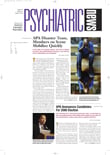“In the immediate aftermath of a disaster, everyone feels upset, but not everyone goes on to develop psychological problems,” said Matthew Friedman, M.D., Ph.D. “Most people show wonderful courage and resilience.”
Moreover, he noted, first responders who reduce initial distress and fortify resilience may accelerate recovery.
Friedman is executive director of the National Center for Posttraumatic Stress Disorder (PTSD) in White River Junction, Vt., and a professor of psychiatry and pharmacology at Dartmouth Medical School.
For help in accomplishing those tasks, psychiatrists and others who provide acute aid in disasters can turn to the new “Psychological First Aid Field Operations Guide.” The guide was developed by the National Center for PTSD in collaboration with the terrorism disaster branch of the National Child Traumatic Stress Network and an international team of disaster response experts.
“The guide presents a pragmatic approach that exemplifies best knowledge and best practices for first responders,” said Friedman. Work on the manual began in late 2001 in response to concerns raised about the effectiveness of responses to the September 11, 2001, terrorist attacks in the United States. The guide was released last month, earlier than planned, to help responders deal with Hurricane Katrina.
Funding for the guide came from the Substance Abuse and Mental Health Services Administration.
As the guide details, people affected by a disaster first need a safe place to calm down and get physical and emotional comfort, away from exposure to reminders of the trauma such as extensive television viewing. Responders need to help survivors connect with family, friends, and neighbors and with community organizations offering assistance. They need to provide a steady stream of information about what has transpired and what's being done to restore normality. Efforts should focus on helping both children and adults cope with the disaster and take an active role in their own recovery.
The guide emphasizes the need to work with the whole family, recognizing developmental issues for children of different ages. “One of the major buffers against traumatic stress after a catastrophe is social connectedness,” noted Friedman. “The family is the primary connector. Parents serve as the bellwether of how well the child is going to do.”
The guide also emphasizes that many people do not want to talk about what happened to them in the first couple of days, Friedman said. It maintains that so-called “debriefing”—immediately recounting details of one's personal experiences—not only is unhelpful, but also may be harmful.
Delays in getting help to Katrina survivors in the New Orleans Superdome and convention center caused considerable emotional distress, Friedman said. Survivors suffered physical privation for five days—with lack of food and water, little sleep, extreme heat, crowding, noise, and poor sanitation facilities—as well as endured or feared attacks by other evacuees. Many didn't know where some members of their families were. They experienced continued exposure to traumatic reminders of Katrina's devastation by seeing flood waters and corpses.
“We'd expect such situations to increase the risk of acute psychological problems and delay recovery, but it's impossible to predict that,” Friedman stressed. “How connected or disconnected people are may make a big difference.”
High levels of psychological problems predicted among New York City residents after the September 11 attacks, he said, never materialized.
Psychiatrists, teachers, and others working with Katrina survivors can use the psychological first aid guide to help minimize psychological fallout, he said, and to identify those who are unable to recover quickly and help them get treatment.
The Web site of the National Center for PTSD also offers downloadable handouts to help physicians and other medical personnel manage psychosocial issues and pharmacological treatment and assess and respond to individuals who may have suicidal intent. The Web site additionally offers downloadable handouts for others working with survivors, including journalists, and for survivors and families, along with links to additional sources of information.
The National Center for PTSD's “Psychological First Aid Field Operations Guide” is posted at<www.ncptsd.va.gov/topics/katrina.html>. The National Child Traumatic Stress Network's Web address is<www.NCTSN.org>.▪
